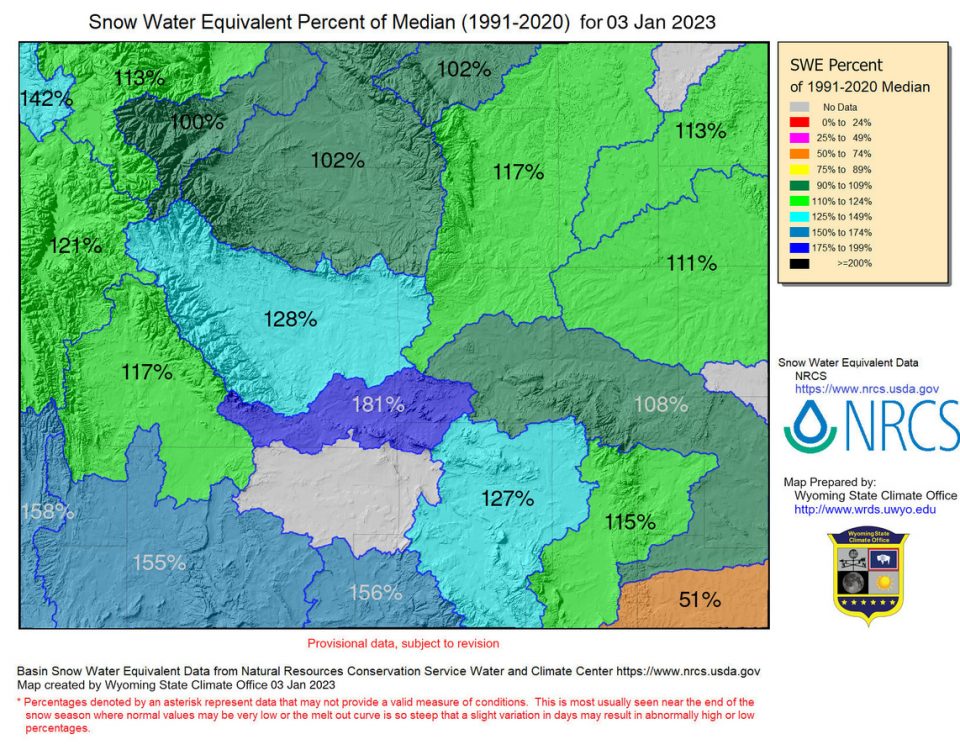It’s been warm and the vegetation has been greening up along northwest Wyoming’s valley floors, springlike conditions that belie a winter that is still firmly holding on in the mountains.
For water managers that means lots of the stuff of their trade — H2O, albeit still mostly in frozen form.
The Snake River’s watershed snowpack is weighing in at 1 1/2 times the average for the second week of May, and it has barely started to melt or is actually still growing in the highest-elevation areas. At Jackson Lake the Bureau of Reclamation water operations manager, Corey Loveland, is expecting enough inflow from the Snake River and other tributaries to cover 1 acre with a foot of water 1.033 million times over.
“The May through July forecast is 148 percent of normal in Jackson Lake,” Loveland said.
The amount of water soon headed into the enlarged, glacially gouged natural lake, in other words, will be enough to fill 370,000 acre-feet of empty space in the 56-percent-full impoundment — and then nearly fill the whole lake again one more time.
Temperatures and precipitation, both impossible to predict precisely, will determine how the snow and ice melts off. The pace determines exactly how high and fast rivers and streams will rage, and how quickly the lakes will fill in the months ahead. At mid and lower elevations the melt is already well underway, and waterways are showing it by flowing higher and faster.
The Snake River at Alpine, for instance, carried 15,700 cubic feet per second Monday morning, the highest reading for May 8 in 46 years of U.S. Geological Survey record-keeping.
Sunshine and temperatures in the high 60s dominate the week’s forecast, and by Saturday the National Oceanic and Atmospheric Administration is predicting Snake River Canyon flows of 22,000 cfs.
While the Snake is running right now in record territory, it’s an open question if peak flows this runoff season will reach those from other historic water years, like 1997 and 2011.
“It’s a good thing, as far as water supply,” Loveland said, “and it’s manageable.”
Palisades Reservoir has been kept near-empty to allow Loveland and his colleagues to send as much water as necessary downstream to prevent flooding.
Although the Snake is largely engineered and encased by levies in the developed reaches of Jackson Hole, managers believe there is potential for flooding downstream of Jackson Lake due to uncontrollable tributary runoff.
“We can reduce the amount of water coming down [out of the dams] if there’s tributary flooding,” Loveland said. “That’s one of those decisions we’ll have to make as it’s happening.”
Loveland said he’s still reviewing the data and weather forecasts and doesn’t yet have a schedule for releases out of Jackson Lake. But the schedule will be completed soon and presented at the Bureau of Reclamation’s annual streamflow and reservoir operations meeting in Jackson, scheduled for 5:30 p.m. May 18 at Teton County Library.




